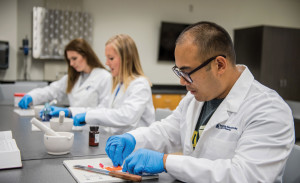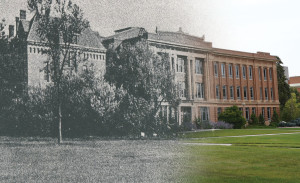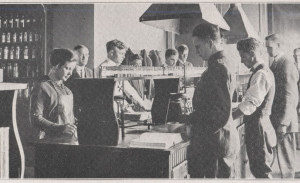University academic programs go through accreditation and reaccreditation on a fairly regular basis—some are on cycles as short as three years. But this fall marks the conclusion of a sweeping, universitywide confirmation of accreditation without which individual program accreditation wouldn’t hold much weight.
South Dakota State University has held status as an accredited institution through the Higher Learning Commission since 1916 and is on a 10-year reaccreditation cycle. The current cycle culminates in early November with an on-site visit from a peer-review team on behalf of the HLC.
“I think the greatest impact of the reaccreditation process is it helps ensure institutional quality and improvement,†said Mary Kay Helling, vice provost for academic affairs. “There’s a real opportunity to learn more about the institution, what we’re doing well and where we can improve. Unless an institution participates in such a review process, we don’t necessarily identify strengths and areas for improvement.â€
With its broad scope examining the whole of the university’s functions and practices, reaccreditation might seem like a process with high proportional impact for administration or faculty in relation to students, but that is not the case. Two of the most impactful consequences of failing to earn accredited status have the greatest impact on students. Accreditation has an impact on everyone with ties to the university—from the president all the way down to incoming students.
“The HLC serves as a gatekeeper for federal funds in higher education,†said Helling, who serves on the core leadership team overseeing the reaccreditation process. “That includes federal financial aid to students. Unaccredited institutions are not eligible for many types of federal funds. Another downside for students, in particular, is that credits may or may not transfer from one institution to another.â€
Being an accredited institution of higher learning also reflects on graduates seeking employment. Employers are likely to scrutinize degrees held by those who graduated from unaccredited institutions more so than students from accredited institutions and programs—even firms who bring in SDSU students and graduates in volume.
“Daktronics has supported accreditation because we believe it brings credibility to a degree from an institution,†said Carla Gatzke, Daktronics’ vice president of human resources.
As one might expect of a high-impact, comprehensive process, several tasks must be completed for institutions of higher learning to earn the HLC’s favor. SDSU is in the Open Pathway, which is one of three options for maintaining accreditation. This option requires completion of the assurance argument with evidence, a federal compliance review, an HLC student opinion survey and on-site visit and participation in a university identified Quality Initiative.

Seven pharmacy graduates received certificates for the then two-year program in 1980. The now six-year program graduated 83 students in May.
The QI is unique to Open Pathway institutions and serves as a challenge to undertake large projects suited to improve the university experience.
SDSU chose the HLC Academy for the Assessment of Student Learning for its Quality Initiative beginning in summer 2015. Following a year of data gathering, analysis and planning, SDSU launched a series of three, year-long SDSU Assessment Academies where all academic programs, along with selected student affairs and other academic co-curricular units developed or updated program level assessment plans focused on the assessment of student learning. SDSU’s QI was completed in June 2019.
Overall, more than 110 individuals ranging from administration to current students have worked on various aspects of preparing the assurance argument, locating evidence, communicating with the university community about the process and planning for the visit. The assurance argument and federal compliance review are due in September.
SDSU’s commitment to excellence and continuous improvement has an impact on everyone at the university.
“It’s really important to be accredited,†Helling said. “We want to be accredited as a public, state-funded institution because it helps ensure quality and ongoing improvement.â€
– Landon Dierks








